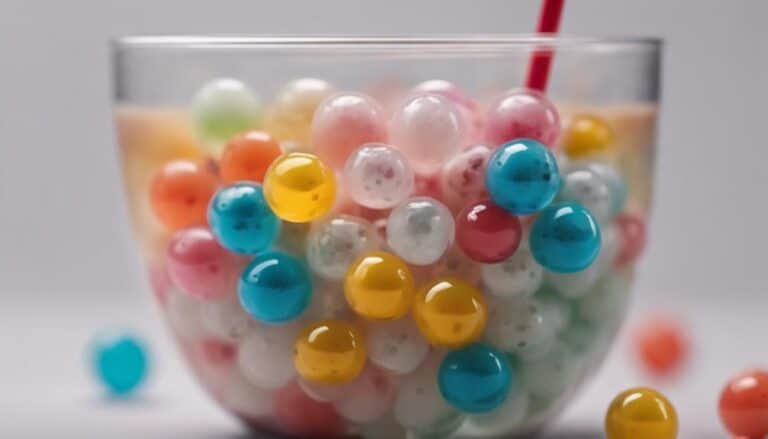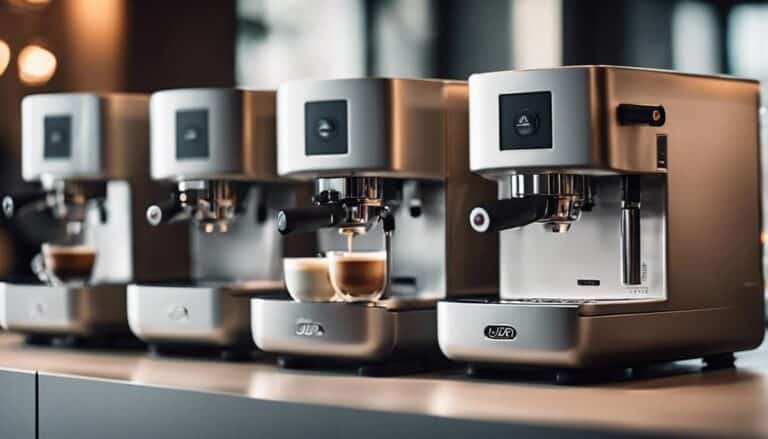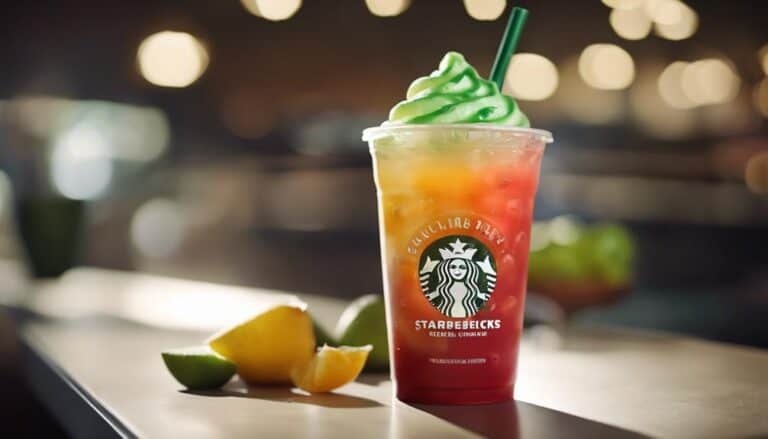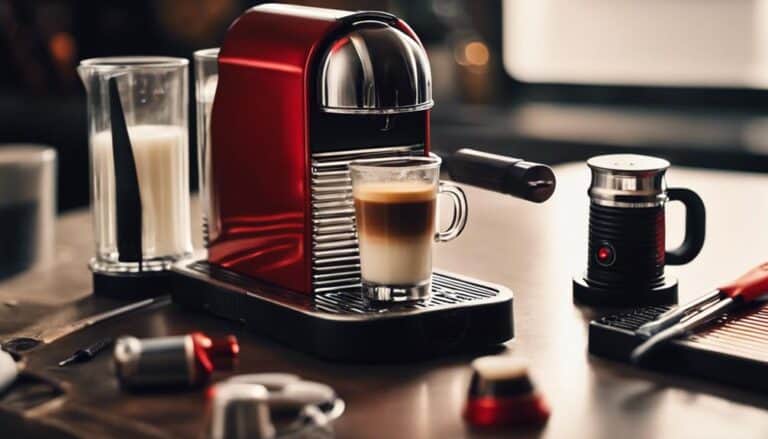7 Differences: Nitro Cold Brew Vs Cold Brew

As a coffee enthusiast, the distinctions between nitro cold brew and cold brew have always intrigued me. The way they're crafted and the nuances in flavor and texture they offer make for an interesting comparison. Exploring the differences in brewing methodology, serving style, texture, and flavor profiles between these two popular cold coffee options can shed light on which one might suit your palate better. So, let's break down these seven key differences and uncover the unique characteristics that set nitro cold brew and cold brew apart.
Brewing Methodology
When comparing the brewing methodology of nitro cold brew and cold brew, one can observe significant differences in the process that contribute to their distinct textures and flavors. Cold brew is crafted by steeping coarse coffee grounds in cold water for an extended period of 12 to 24 hours. This slow steeping process extracts flavors from the coffee beans, resulting in a smoother brew with a slightly sweeter taste compared to traditional hot-brewed coffee.
On the other hand, nitro cold brew takes the cold brew one step further by infusing it with nitrogen gas. This nitrogen infusion imparts a velvety, creamy texture to the coffee, elevating its mouthfeel and creating a unique flavor profile. The nitrogen is added under high pressure, giving the nitro cold brew a cascading effect when poured, enhancing the overall sensory experience.
Due to the nitrogen infusion process, nitro cold brew is often found in coffee shops where specialized equipment is used to keg the cold brew concentrate and pressurize it with nitrogen. This makes nitro cold brew less common for home consumption but allows for wider availability in cans, catering to those seeking convenience in their coffee choices.
Serving Style
When comparing Nitro Cold Brew and Cold Brew, one key aspect to ponder is the serving style.
The choice between a cup or pitcher presentation for Cold Brew versus the on-tap serving method for Nitro Cold Brew can greatly impact the overall experience.
While Cold Brew offers versatility with customizable add-ins, Nitro Cold Brew stands out for its visually striking cascading effect when poured.
Cup Vs Pitcher
Serving cold brew coffee in a pitcher allows for versatile customization and convenient storage for multiple servings. Cold brew's pitcher serving style enables easy dilution with water, milk, or ice, catering to individual preferences.
Nitro cold brew, on the other hand, is commonly poured into individual cups due to its unique nitrogen-infused texture. This method helps preserve its creamy consistency and signature cascading effect.
While cold brew can be stored in the fridge for up to a week in a pitcher, nitro cold brew is often dispensed from a tap or canister to maintain its distinct qualities.
The choice between a cup or pitcher serving style ultimately depends on the desired level of customization and the experience one seeks when indulging in cold brew coffee.
On Tap Vs Bottled
The distinction between serving nitro cold brew on tap and in bottles lies in the enhancement of texture and presentation, catering to varying preferences and consumption occasions. Nitro cold brew, akin to draft beer, is best served on tap to achieve a creamy texture and a visually appealing cascading effect. This method adds a luxurious mouthfeel, elevating the drinking experience.
On the other hand, cold brew is typically bottled or canned for convenience and extended shelf life. Bottled cold brew is ideal for on-the-go consumption and easy storage in the fridge.
The serving style of nitro cold brew on tap provides a unique sensory experience that differs from the bottled or canned cold brew, making it a popular choice for those seeking a more indulgent coffee experience.
Texture and Mouthfeel
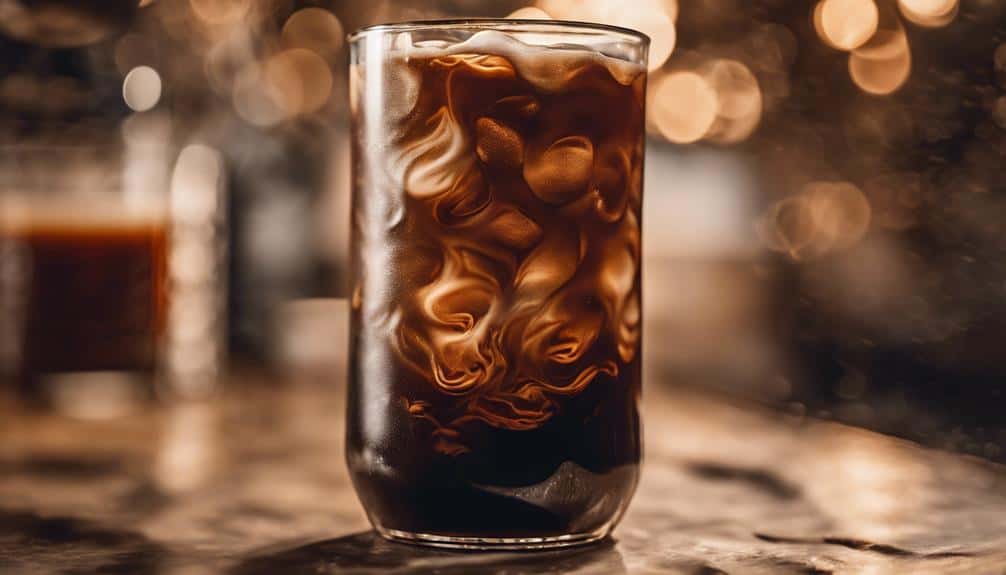
In exploring the texture and mouthfeel of nitro cold brew versus cold brew, one immediately notices a distinct difference in their creamy profiles. Nitro cold brew stands out for its velvety mouthfeel and creamy texture, achieved through nitrogen infusion, giving it a smooth and luxurious feel. On the other hand, cold brew, known for its long steeping process, offers a smoother experience with a slightly sweeter taste, creating a different mouthfeel than nitro cold brew.
Let's compare the texture and mouthfeel of nitro cold brew and cold brew in the table below:
| Aspect | Nitro Cold Brew | Cold Brew |
|---|---|---|
| Texture | Creamy, velvety | Smooth |
| Mouthfeel | Smooth and luxurious, dense profile | Slightly sweet |
| Notes | Subtle chocolate and fruit notes | – |
The nitrogen infusion in nitro cold brew not only enhances its dense profile but also contributes to its smooth finish, making it a rich and flavorful choice for those seeking a unique coffee experience.
Flavor Profile
Exploring the flavor profile of nitro cold brew and cold brew reveals distinct characteristics that differentiate them with regards to taste and complexity. Cold brew offers a mild and low acidity flavor profile, making it smoother and less bitter compared to traditional hot coffee. On the other hand, nitro cold brew presents a sweeter taste with a velvety texture, courtesy of the nitrogen infusion process. The nitrogen bubbles in nitro cold brew not only enhance the overall mouthfeel but also contribute to a unique flavor experience.
Additionally, cold brew can be further customized to suit different flavor preferences by adjusting brewing time and carefully selecting the beans used in the brewing process. This customization allows for a variety of flavor profiles to be achieved, making cold brew a versatile option for coffee enthusiasts. In contrast, the nitrogen infusion in nitro cold brew creates a distinct and indulgent flavor that sets it apart from traditional cold brew. The combination of the sweeter taste, velvety texture, and unique flavor makes nitro cold brew a popular choice for those seeking a more elevated coffee experience.
Acidity Levels
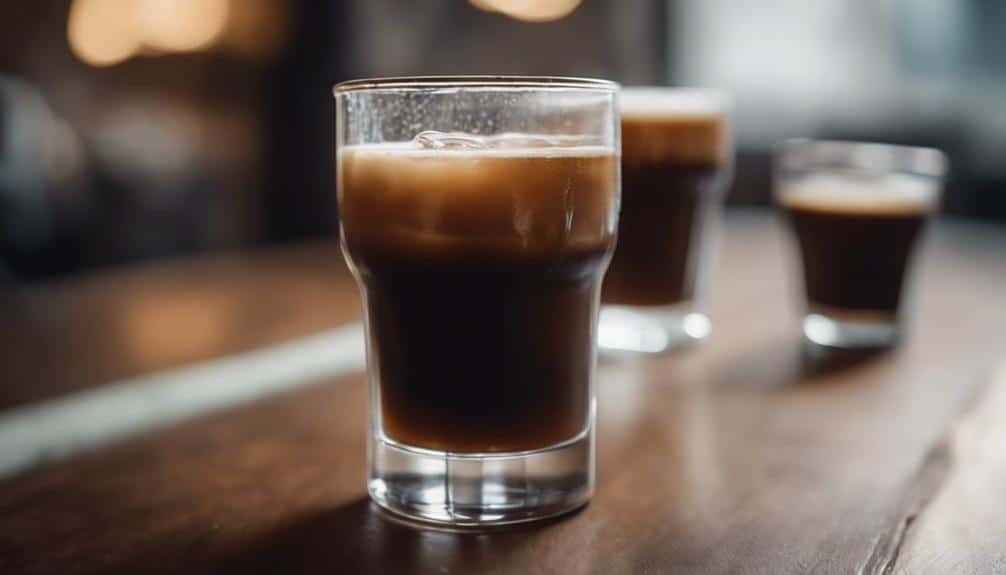
When comparing nitro cold brew to regular cold brew, it's essential to recognize the differences in acidity levels.
Cold brew coffee is renowned for its lower acidity, making it a suitable choice for those looking for a smoother drinking experience.
Understanding the acidity levels in these beverages can greatly influence one's preference for a specific type of coffee.
Nitro Vs Regular Acidity
With its nitrogen infusion, nitro cold brew achieves a smoother taste by balancing acidity levels, distinguishing itself from regular cold brew's gentler profile. The reduced acidity in nitro cold brew, combined with the nitrogen bubbles, creates a milder flavor profile that's less harsh on the palate. This makes nitro cold brew a great option for those who are sensitive to acidic beverages and seek a more enjoyable drinking experience.
On the other hand, regular cold brew also boasts low acidity levels, making it a popular choice for individuals looking for a gentler coffee option. However, the nitrogen infusion in nitro cold brew takes the smoothness to another level, offering a unique and satisfying coffee experience.
Cold Brew Acid Content
Cold brew coffee's distinctive characteristic lies in its notably lower acidity levels compared to traditional hot brewed coffee, resulting in a smoother and more stomach-friendly drinking experience. The cold brewing process reduces the acidic content extracted from the coffee grounds, leading to a mellow flavor profile with lower acidity levels.
This gentler brewing method involves an extended steeping time at room temperature, allowing for a balanced and less acidic cold brew. Individuals with sensitive stomachs or acid reflux often prefer cold brew for its smoother taste and reduced acidity.
Coffee Ph Levels
The coffee's pH levels serve as an important indicator of its acidity, with cold brew typically exhibiting a lower pH level compared to hot brewed coffee. Cold brew coffee usually falls within a pH range of 6.3 to 6.5, making it less acidic than its hot counterpart.
On the other hand, nitro cold brew, infused with nitrogen, tends to have a slightly higher pH level ranging from 6.5 to 6.8, resulting in a smoother taste experience. The lower acidity in cold brew contributes to a milder flavor profile, while the nitrogen infusion in nitro cold brew enhances the overall taste sensation.
Variations in pH levels can arise from different brewing processes and the types of coffee beans used, influencing the final flavor and texture of the brew. Understanding these pH distinctions helps coffee enthusiasts select the ideal cup based on their acidity and flavor preferences.
Caffeine Content
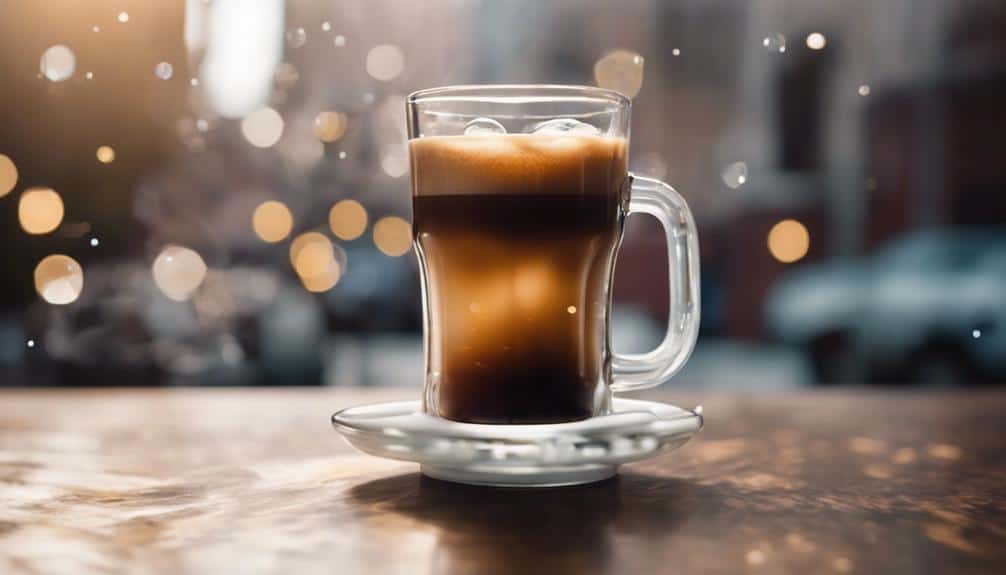
Analyzing the caffeine content of nitro cold brew and cold brew reveals notable differences in their potency and potential impact on consumers seeking a robust coffee experience. When comparing nitro cold brew to cold brew, it's important to take into account factors such as the brewing method, coffee-to-water ratio, and infusion of nitrogen, all of which influence the final caffeine levels in these beverages. Here are some key points to keep in mind:
- Nitro cold brew typically contains more caffeine than regular cold brew, with an average of 180 mg in a 7-ounce serving.
- Cold brew has a variable caffeine content depending on the brewing method, but it's generally higher than traditional hot coffee.
- The infusion of nitrogen in nitro cold brew can enhance the perception of caffeine due to its creamy texture and smooth mouthfeel.
- Caffeine levels in cold brew and nitro cold brew can vary based on the coffee-to-water ratio and brewing time, affecting the final caffeine content.
- Both nitro cold brew and cold brew offer a potent caffeine kick, making them popular choices for those seeking a strong coffee boost.
Popularity and Availability
Gaining traction for its unique creamy texture and presentation, nitro cold brew is becoming increasingly popular in the coffee industry. Cold brew, with its smooth and mellow profile, has also garnered a dedicated following among cold coffee drinkers. While both beverages have their own appeal, nitro cold brew stands out for its special coffee experience and availability in select coffee shops offering it on tap. On the other hand, cold brew is widely available in most coffee shops, catering to those who prefer a more straightforward cold coffee option.
To highlight the differences in popularity and availability between nitro cold brew and cold brew, the table below provides a quick comparison:
| Aspect | Nitro Cold Brew | Cold Brew |
|---|---|---|
| Availability | Select coffee shops offer it on tap | Widely available in most coffee shops |
| Popularity | Increasing due to its unique texture | Staple for cold coffee drinkers |
| Special Experience | Offers a velvety mouthfeel and creamy texture | Known for its smooth and mellow profile |
Nitro cold brew's rise in popularity can be attributed to its luxurious mouthfeel, making it a sought-after choice for those craving a rich coffee experience.
Conclusion
To sum up, the differences between nitro cold brew and cold brew aren't just limited to taste and texture. From the brewing method to serving style, acidity levels, and caffeine content, these two cold coffee options offer unique characteristics that cater to different preferences.
Whether you prefer the creamy sweetness of nitro cold brew or the smooth, low-acid profile of cold brew, there's a cold coffee option out there for every coffee lover to enjoy.

